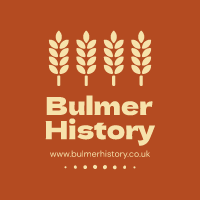AN EVENING REMINISCING (listening Mike Crome)
Recently I was invited by Ashley Cooper to attend a group discussion evening with 7 long time residents of Bulmer to talk about their time in Bulmer during the later stages of WW11 and before modern services such as electricity, water and central heating arrived in Bulmer.
The 7 speakers were, Ray White, Brian Elsey, Steve Parker, Peter Rowe, Alan Dixey Dorothy Cornell (a wartime Land Army Girl and Milk lady) and Dorothy White ( nee Garner).
As you would imagine the discussions did jump around a bit, so I will try and put them into some sense of order.
Heating and open fires
These were mainly open fires burning mostly wood found out and about near where lived, occasionally some coal when finances permitted. There were what was known as “Interoven” described as a fire with an oven over it for cooking and providing heating in the kitchen area. Some sent the heat sideways to the oven before going up the chimney. With open fires in other rooms there was more than one chimney and this could result in rooms becoming filled with smoke. No dried kiln wood in those days meant there was much smoke and if doors were not closed in rooms without a fire, this could cause a draught from the chimney with a fire drawing the smoke down the chimney without a fire filling the house with smoke.
When the chimney needed to be swept, there was several methods used. Nearby growing Holly was a tool much used. A branch with leaves was pulled down the chimney or pushing up from the bottom and creating quite a messy pile of soot in the fireplace. The more common method was to light the Holly in the fireplace and set the chimney on fire on purpose to burn the soot and tar off the chimney! Occasionally resulting in the fire service being called to put out a chimney fire.
Water, and how it was obtained
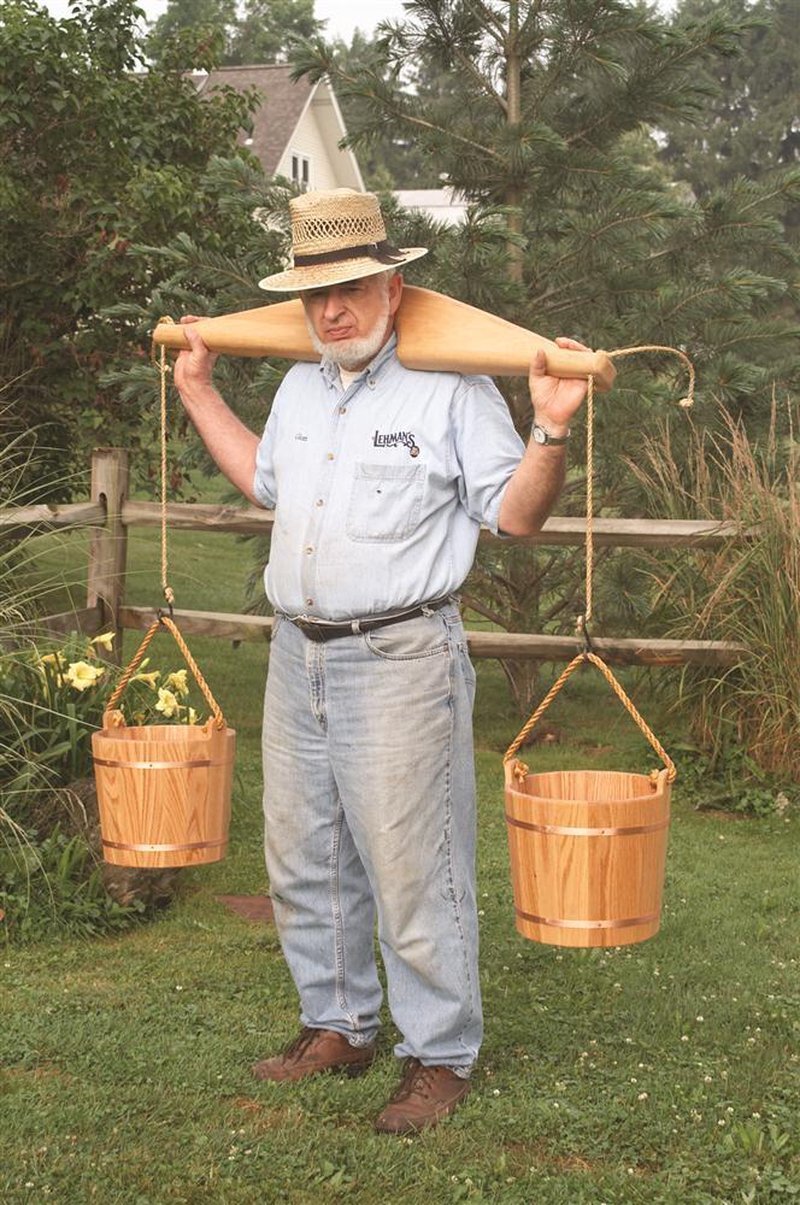
Without a constant water supply to the house it meant all water cooking , drinking and washing had to be collected from springs or wells. There was several wells in Bulmer. One by the Fox was said to be as deep as St. Peter’s Church in Sudbury including the spire!! You didn’t want to fall down that one!! The one in the Bulmer Street said to be from the same source was only 30 feet deep and the one in Blacksmiths Lane was 60 feet deep. This was regarded as ‘hard’ water, because of the chalky strata it came from.
Water was carried in buckets, one in each hand or by the use of a yoke to reduce the strain on the arms.
'Soft' water used for drinking, was essentially rain water which was collected in barrels or tubs under the down pipes from the gutters on the roofs of houses. Some built a tank to collect the rainwater, then piped into the sink with a tap for running water for cooking. Sometimes it would be put through a stocking or something similar to sieve out earwigs etc. Water collected from a surface spring was also ‘soft’ water and drank straight from the spring!!
School days
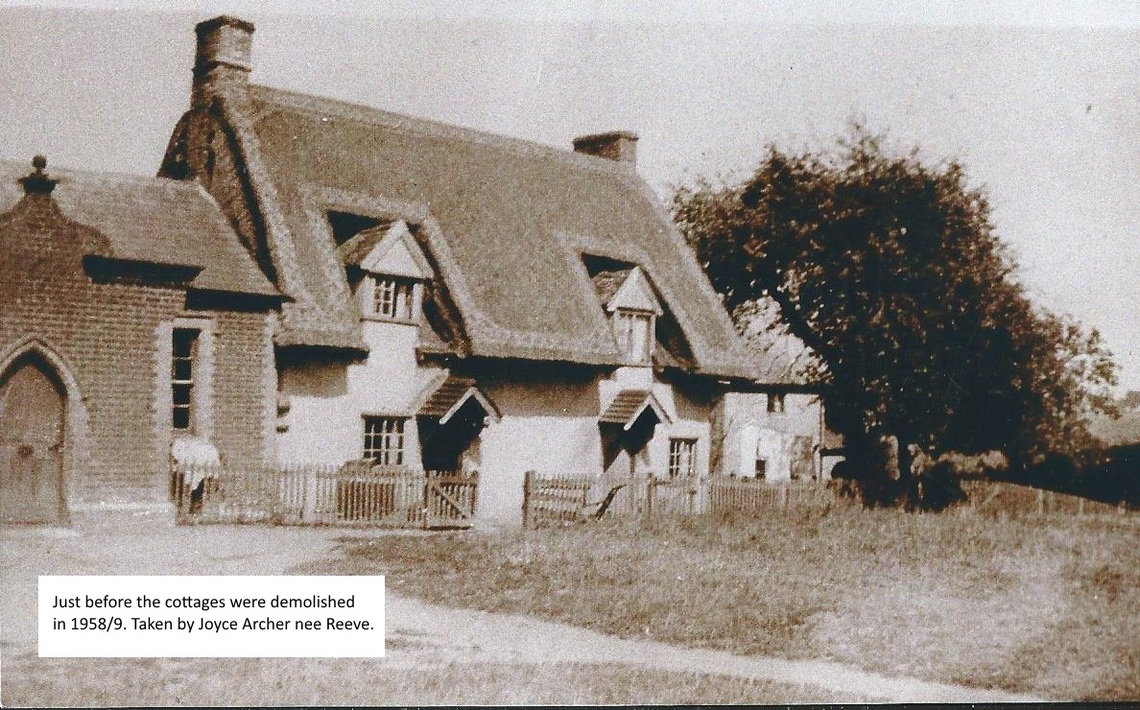
The school was in Church Road near the church took both infants and juniors. Not easily to get to from Bulmer Tye as Church Road was a very narrow lane with steep banks either side. Heating was by “Tortoise stoves” which took sometime to warm the classroom areas each day.
The outside toilets were particularly cold and draughty in the winter, as there was a large gap underneath the door.
No school dinners were provided during the war, so children had return home during the lunch break of an hour. After the war lunch was provided by a business in Halstead and delivered each day to “Dairy Cottage” next door. The Juniors ate on the ground floor and juniors upstairs after they had served the infants with their meals. Each junior had to remember who they had served so they could then serve there pudding. Grace was said before and after dinner.
One memory was when a teacher would send two children to the village shop and post office in Smeetham Hall Lane to get her cigarettes, a practice that would be unheard of today.
More school memories by Alan Dixey can be read here.
Home Life
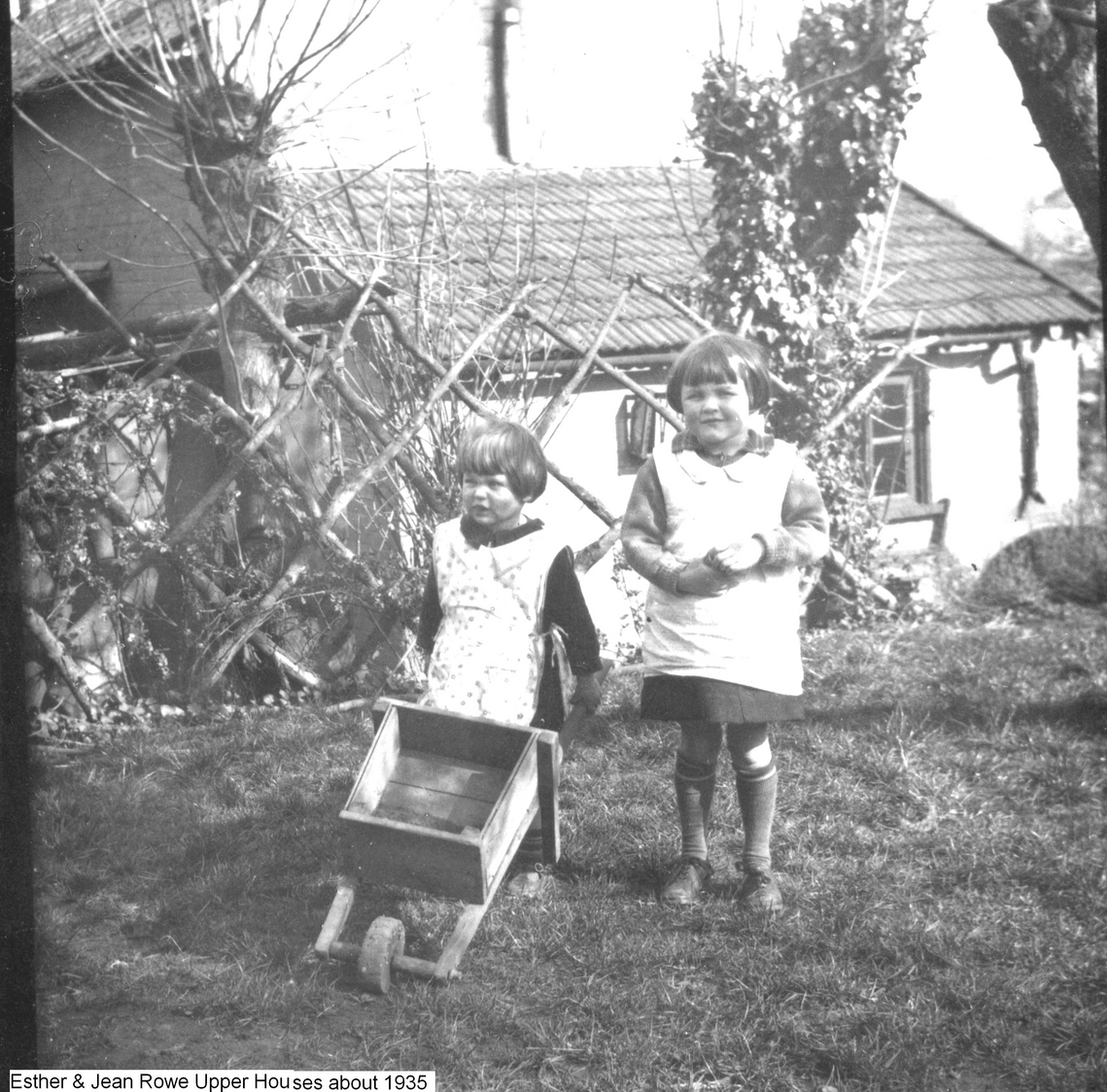
With no heating other than by fires and no electric lighting life was much different than today. Electricity supply did not arrive in Bulmer until 1951/2. A house would be given 4 lights and 1 plug!
Before this it was candles and paraffin lamps. Listening to the Radio was possible by the use of an “accumulator”, that could be recharged after running out, no indication of when this might happen, it depended on how it had been used. Very upsetting when listening to the 7 pm slot of "Dick Barton, Special Agent" (listen to the theme) a real cliffhanger of a drama serial!, no repeats or recordings then! Alan Dixey’s uncle John would deliver one charged accumulator and take the other away to be re-charged, the cost sixpence.
Bicycles were ridden when sent to Sudbury Town on an errand down Ballingdon Hill free wheeling all the way to Ballingdon bridge was the furthest obtained, then cycling along Church Street & Friar Street, never up Cross Street because of the steep hill to Stour Street.
Activities in the evenings, in winter months with no television was Snakes & Ladders, cards, darts and dominoes.
Main activities in the summer,. was to prepare food for the winter. This entailed Bottling fruit, Jam making, Pickling, storing hazelnuts the red squirrels had left behind. Another very interesting preparation was storing spare eggs from their chickens.
The eggs were dipped into the isinglass with a special egg Isinglass a gelatinous substance derived from the swim bladders of certain fish. It has been used for centuries as a method for preserving eggs, and will allow them to last up to 6 months to a year unrefrigerated. The eggs are placed in a solution of isinglass and water, and then sealed in an airtight container. It was always normal practice to break an egg open over a cup before using it. The smell of the egg would indicate whether or not it was still edible.
Sugar beet harvest
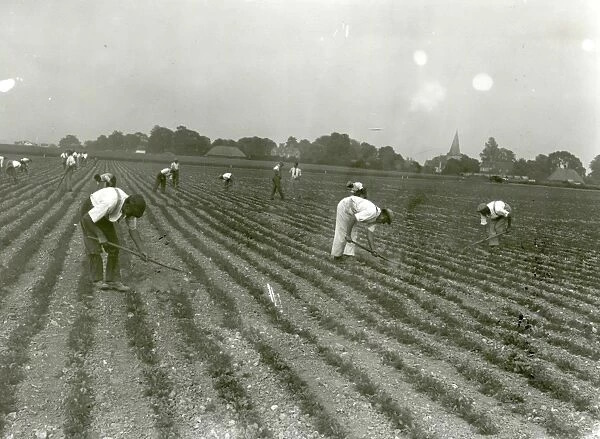
During the nineteen forties, fifties and sixties, sugar beet were grown on many local farms. In the Second World War, they were a crucial crop. Hoeing them and ‘singling them out’—which was known locally as ‘chopping out’—was done as ‘piece work’. Usually undertaken in May or early June, it provided a very welcome addition to the income of many farm-workers and other village families. Wives and children would often help with the ‘singling-out.’ Dorothy Cornell remembers that on one occasion a ‘Sugar Beet Hoeing competition’ took place at Armsey Farm.
Harvesting of sugar beet before mechanisation was one of the hardest and most arduous jobs in the farming year. The beet were loosened in the ground by a horse or tractor pulled implement, but then had to pulled up by hand, using a beet hook, before being ‘topped’ to remove the leaves and then thrown onto heaps on the field. In time these heaps would be hand-loaded onto a trailer with a beet fork, before being taken to the farmyard where they would be unloaded, and then manually loaded again, onto a lorry to be taken to the Sugar Beet factory at Felstead or Bury St Edmunds.
As the beet were lifted in the autumn and winter, in muddy, freezing, or rainy conditions it could often be very unpleasant work.
Mike Crome - March 2024
